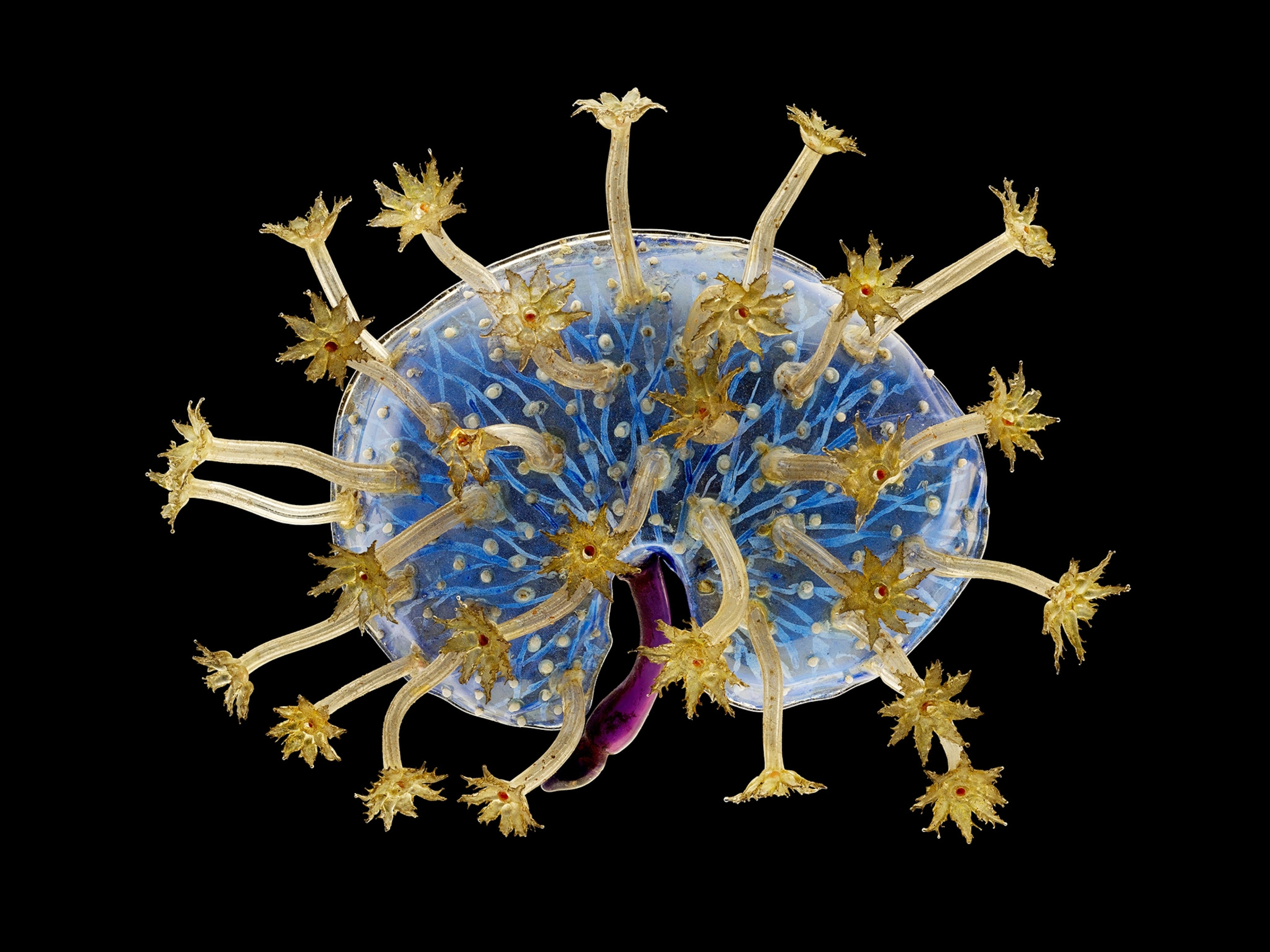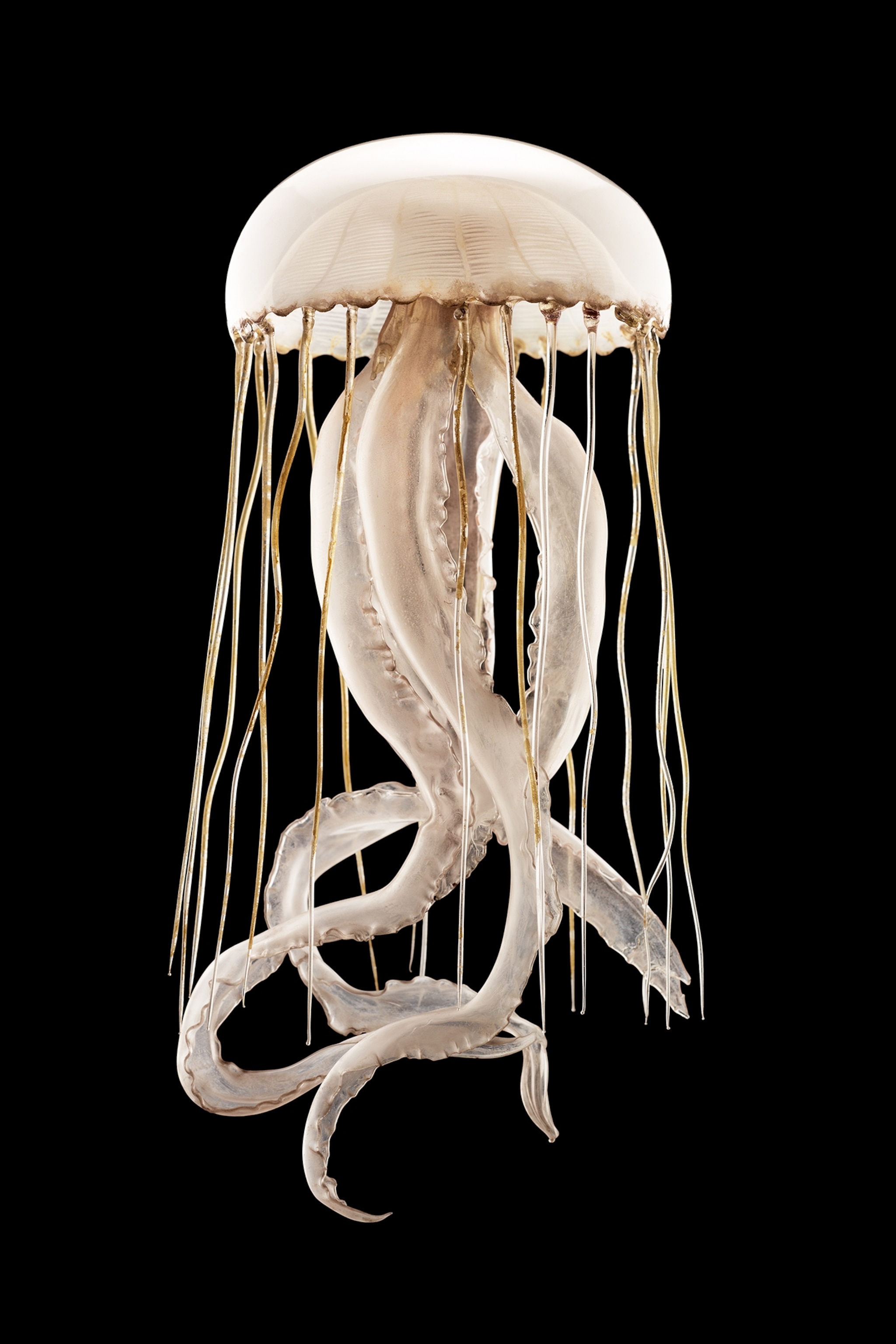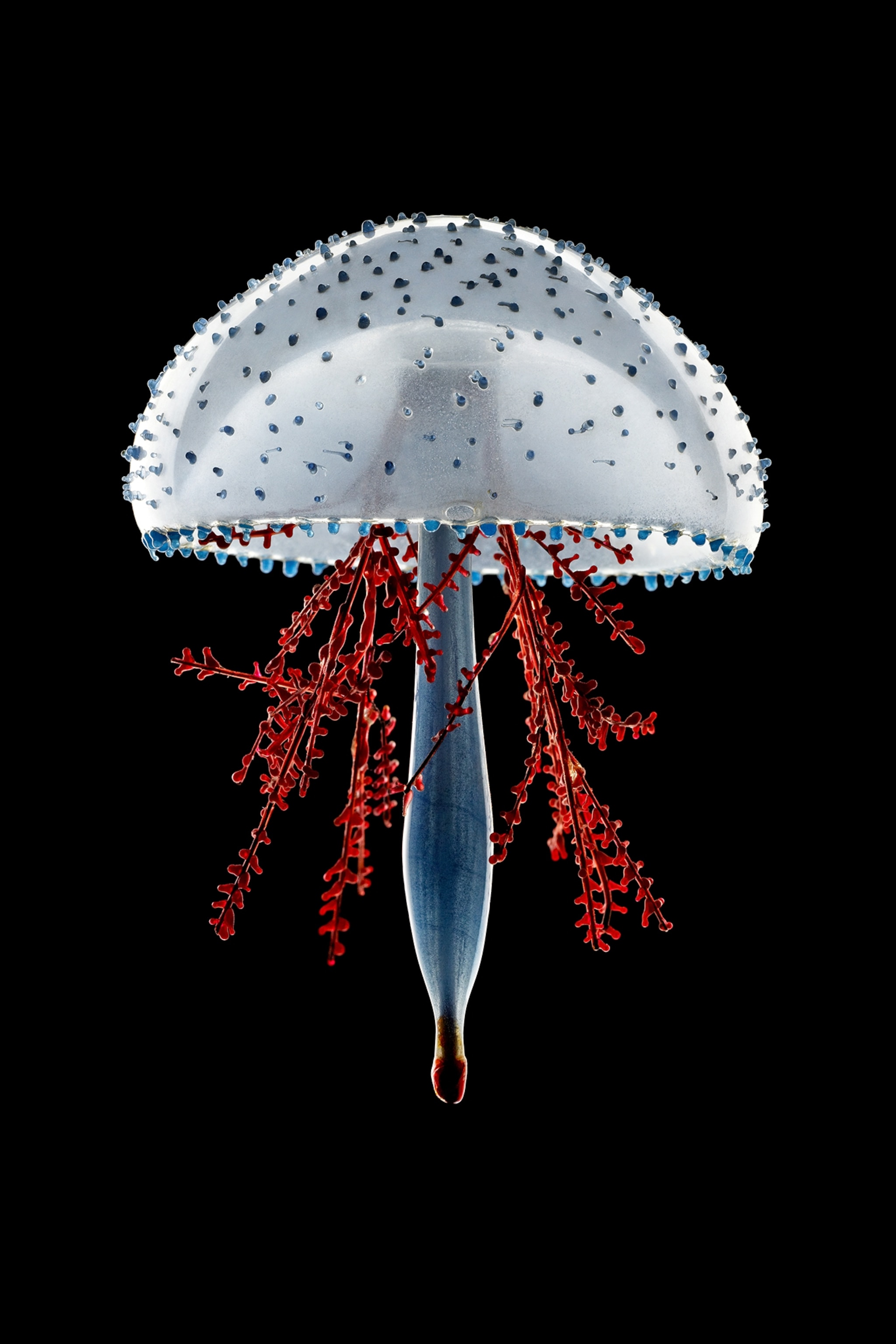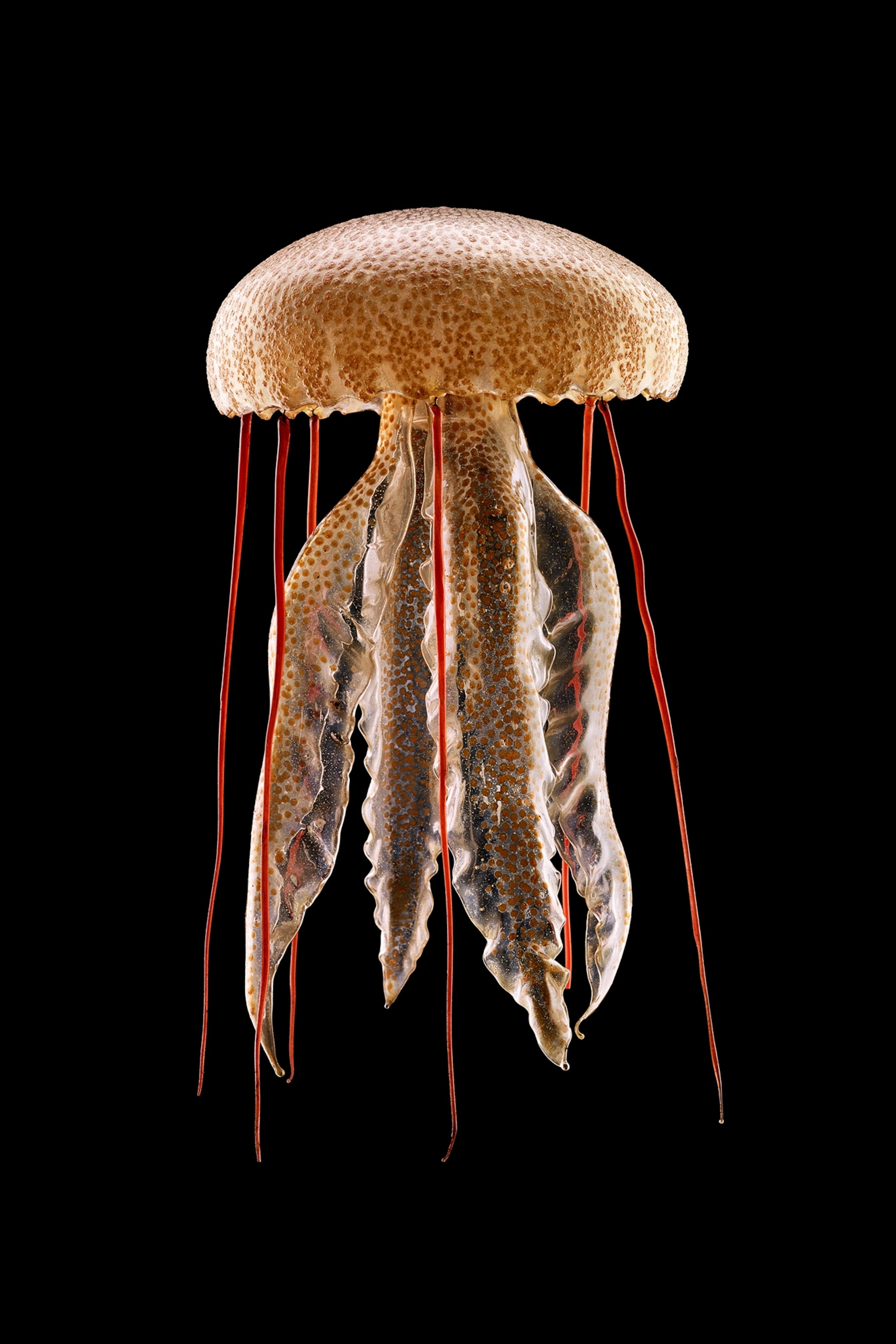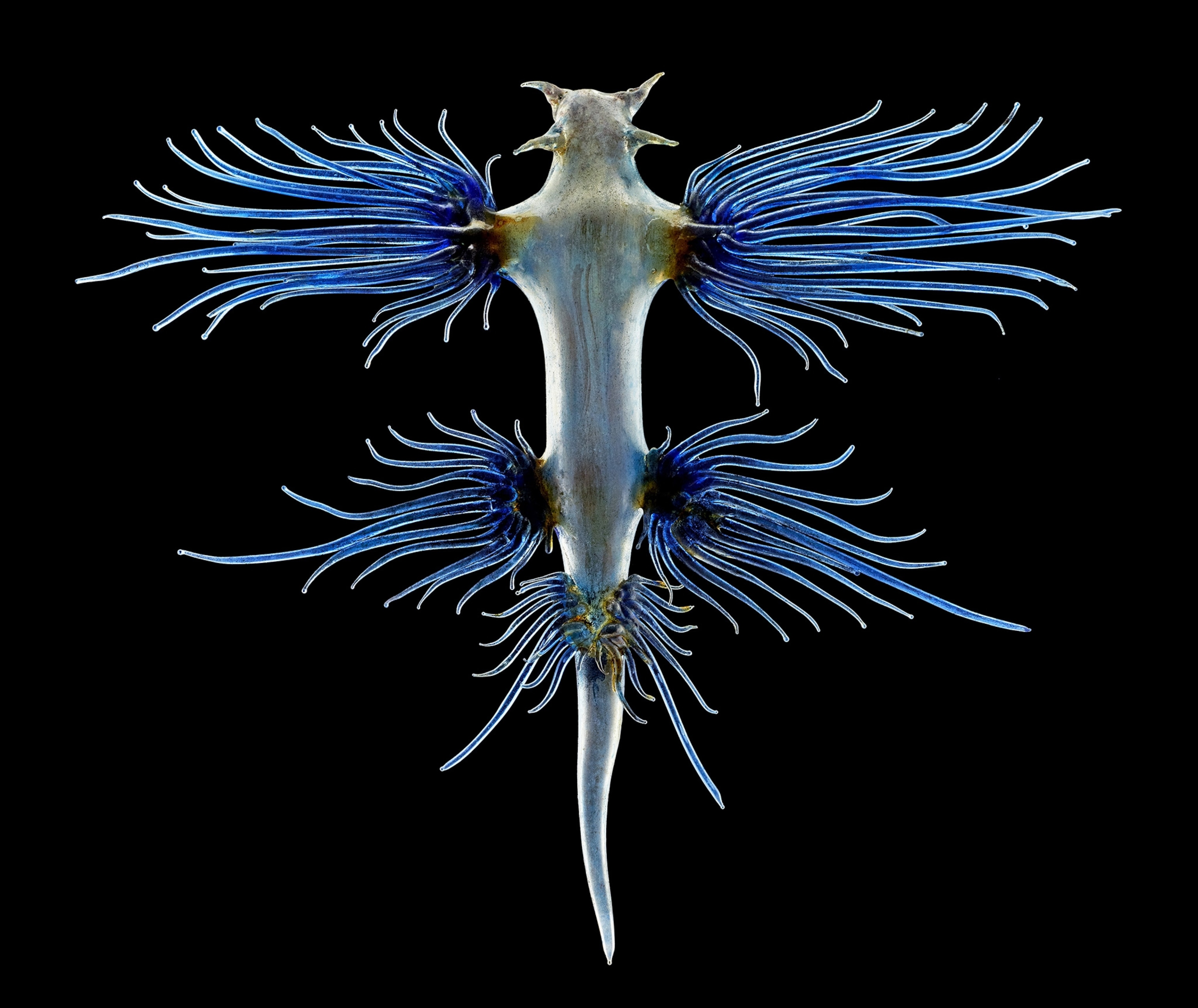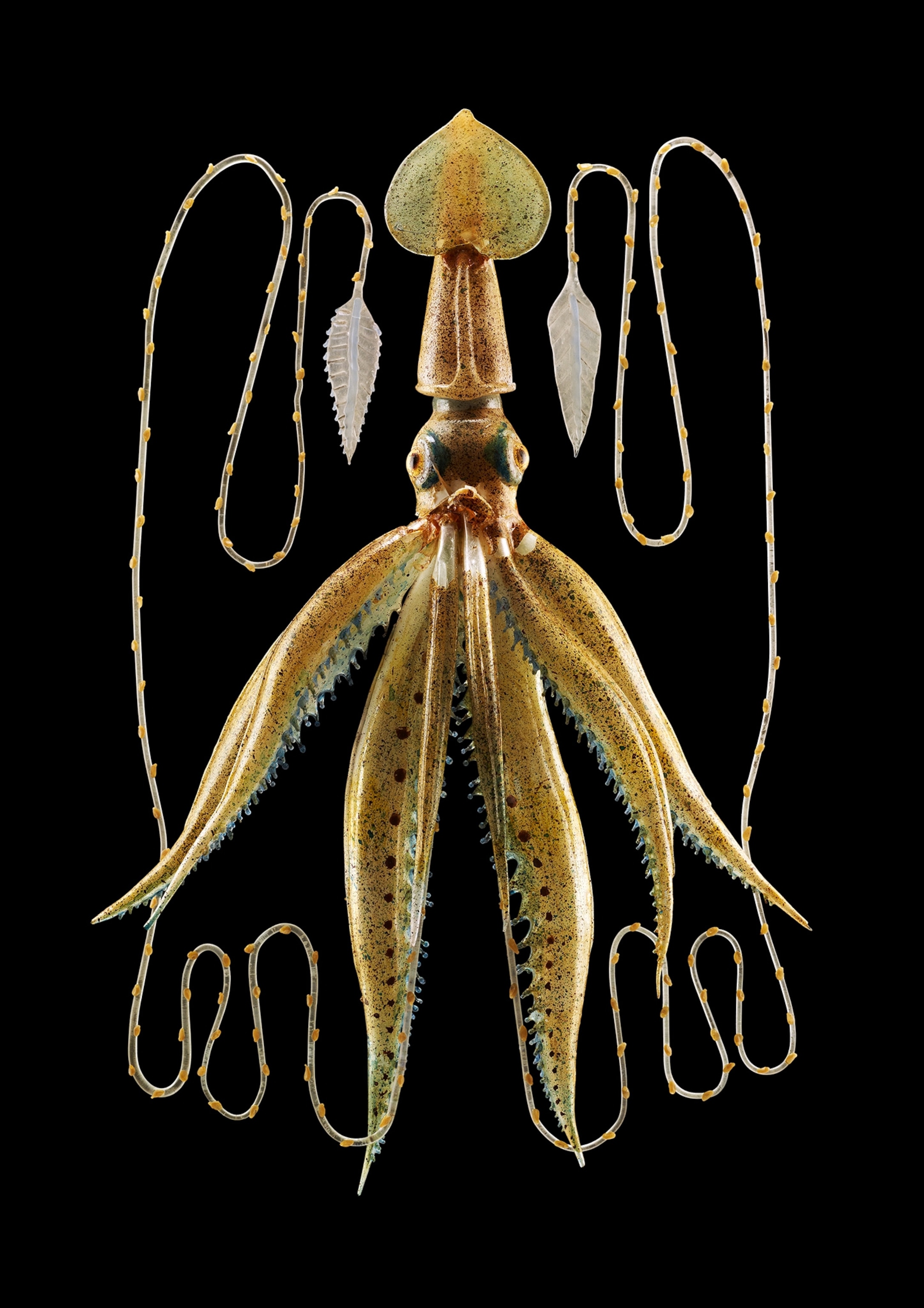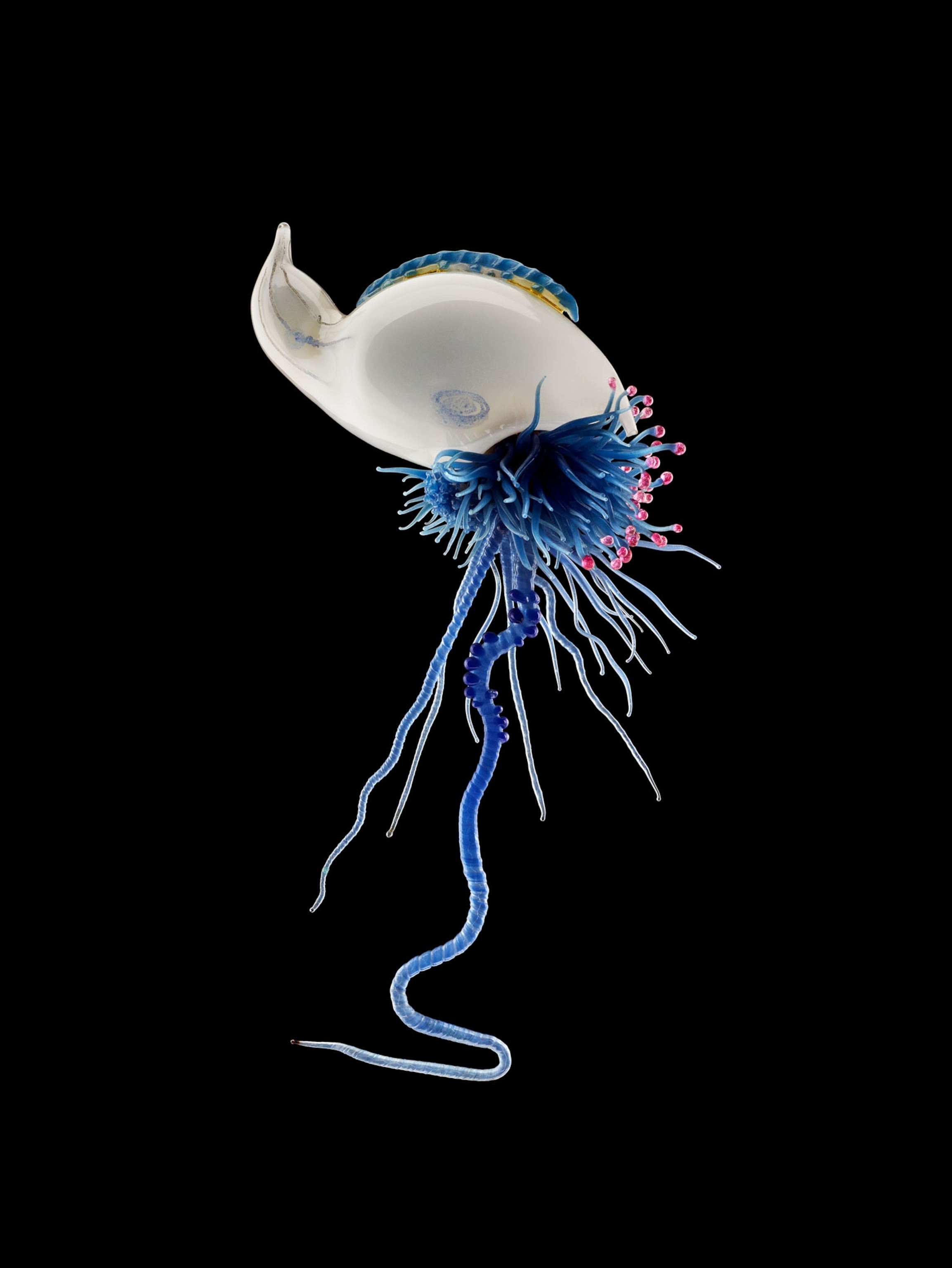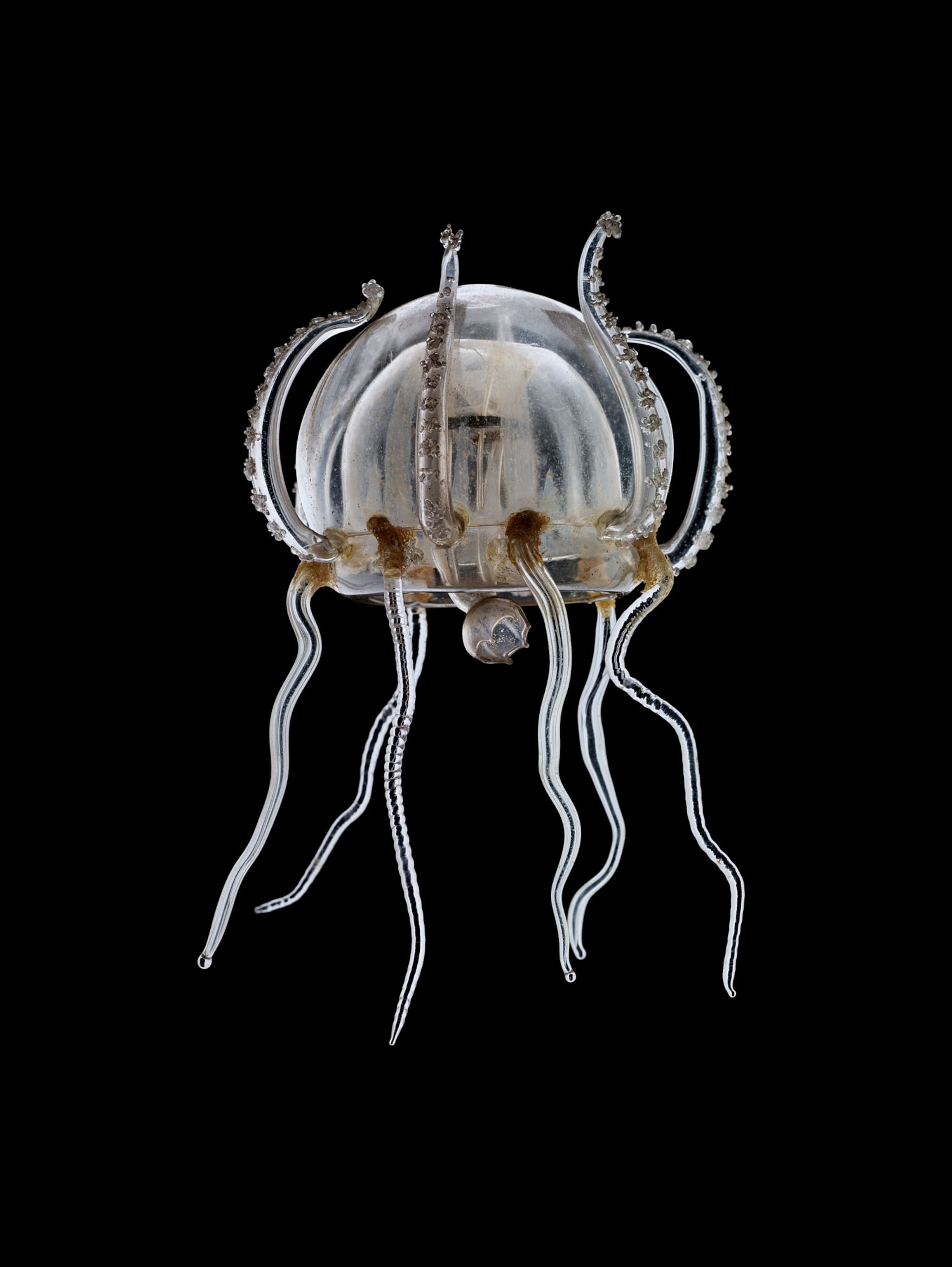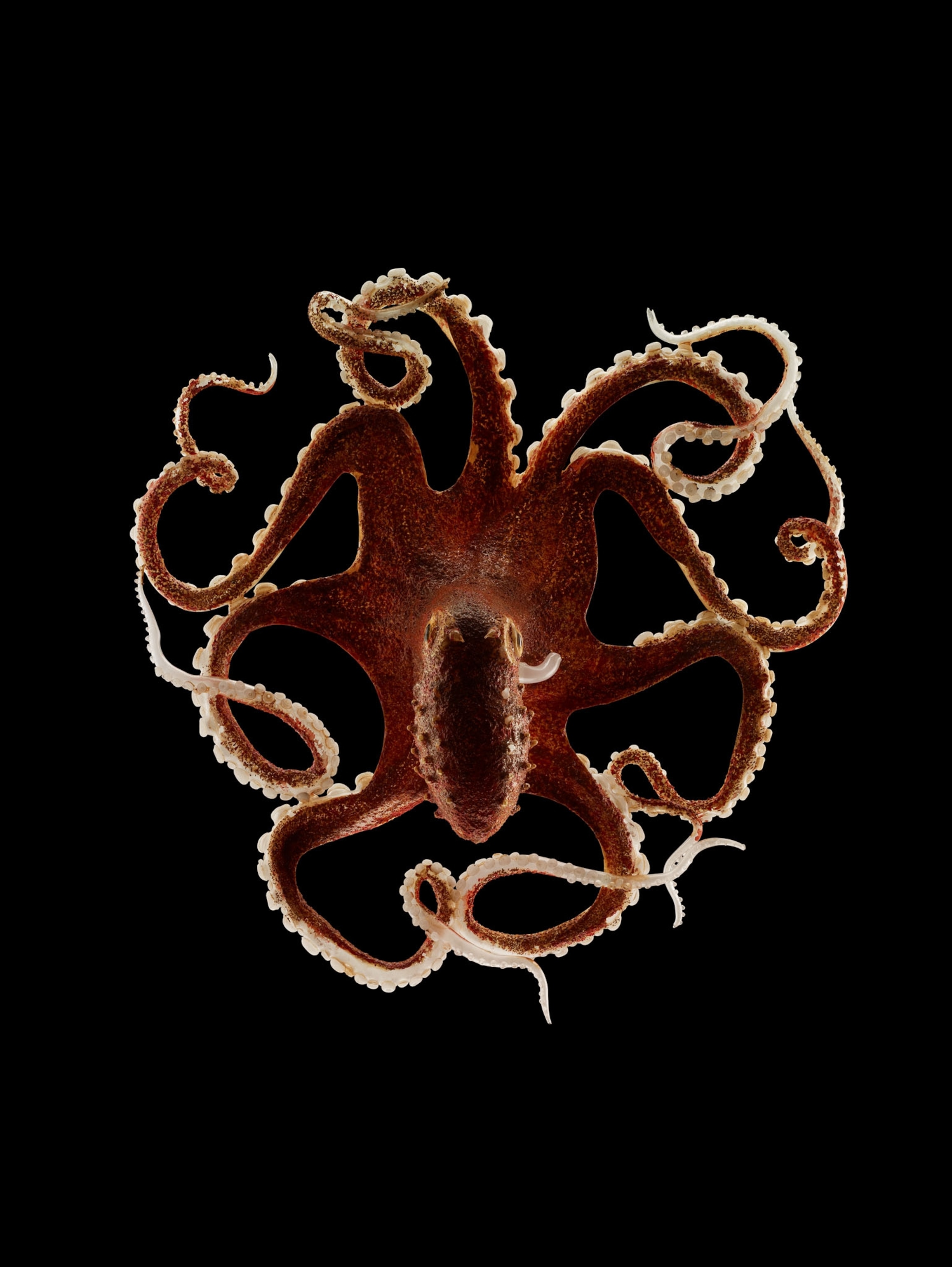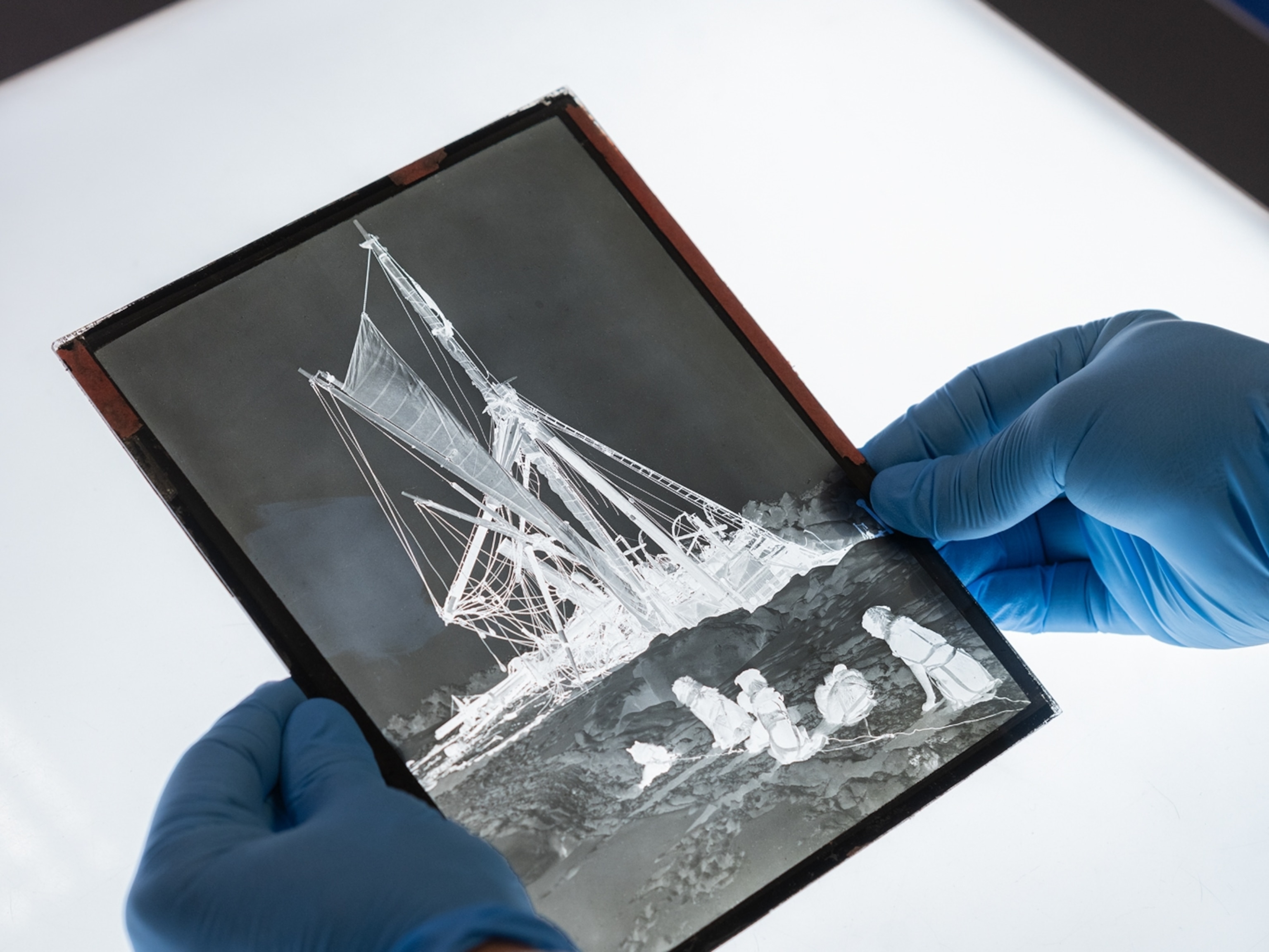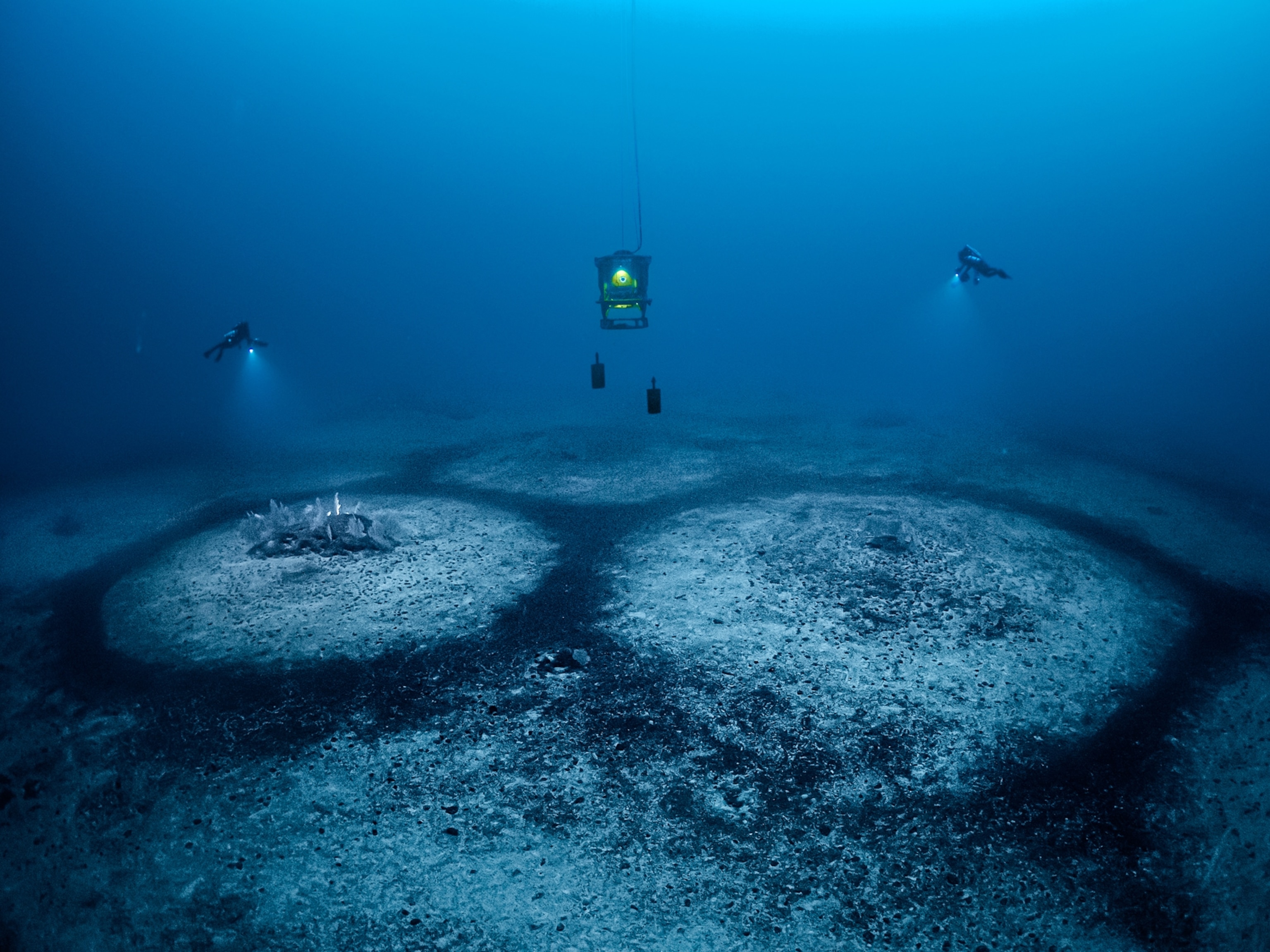For still life master Guido Mocafico, it’s been a years-long quest: to find and photograph a menagerie of century-old glass sea creatures, scattered among institutions and museums worldwide.
The sculptures are the work of Czech glassworkers Leopold Blaschka and his son Rudolf. From 1863 to 1890 the men crafted nearly 10,000 models of 700 species of octopuses, jellyfish, anemones, and more.
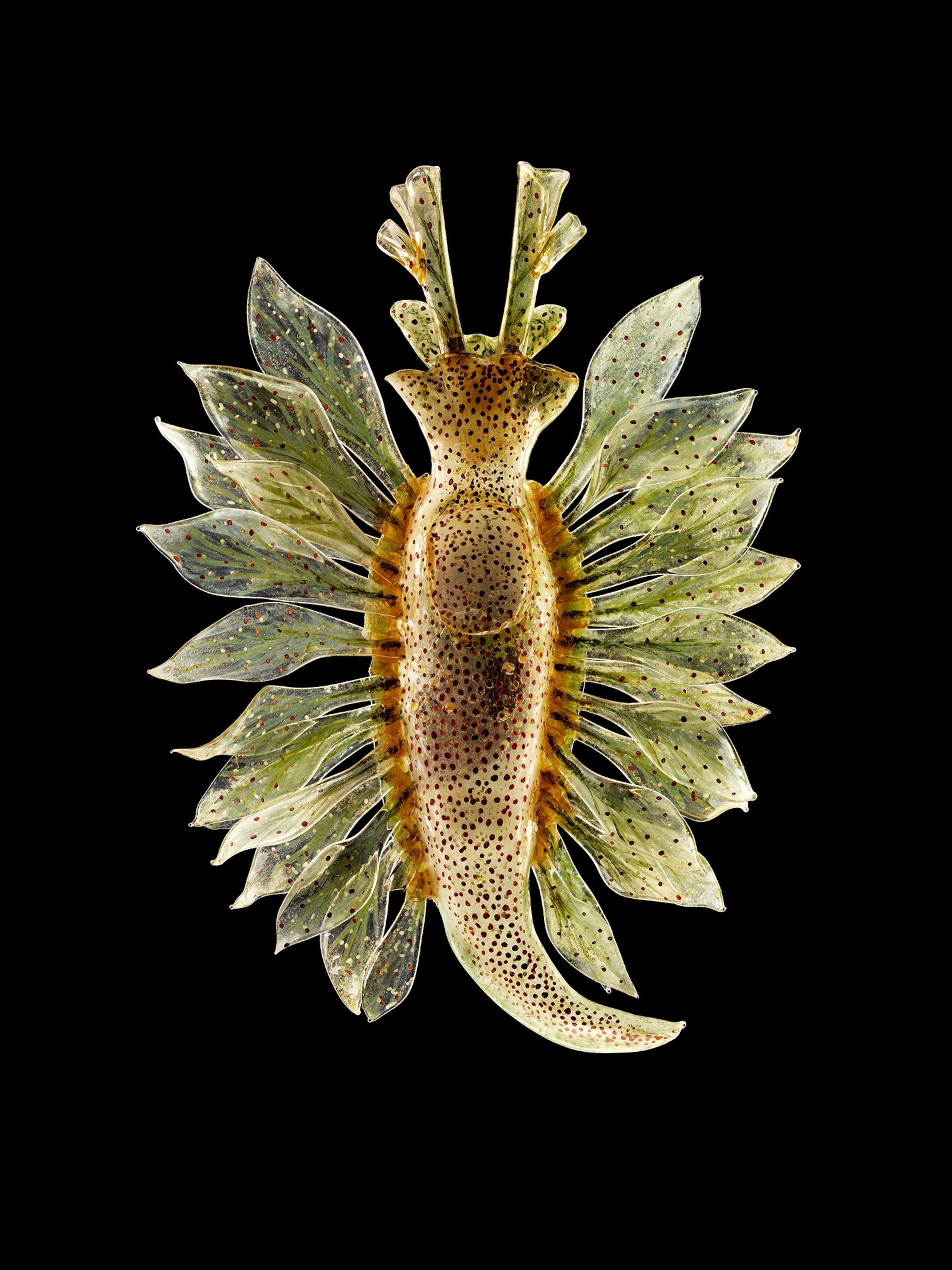

Fascination with natural history, particularly the sea, exploded in the mid-19th century—but sea creatures were difficult to obtain and preserve. The Blaschkas’ lifelike models were in demand not only as teaching tools but also as objects of art.
Descended from a family of glass artists, Leopold could create tendrils like silk strands and polyps like dewdrops. His specific techniques used with the glass creatures have never been fully replicated. To make the sea creatures anatomically accurate, the Blaschkas worked from illustrations, specimens, and later live creatures kept in home aquariums.
This story appears in the June 2021 issue of National Geographic magazine.
